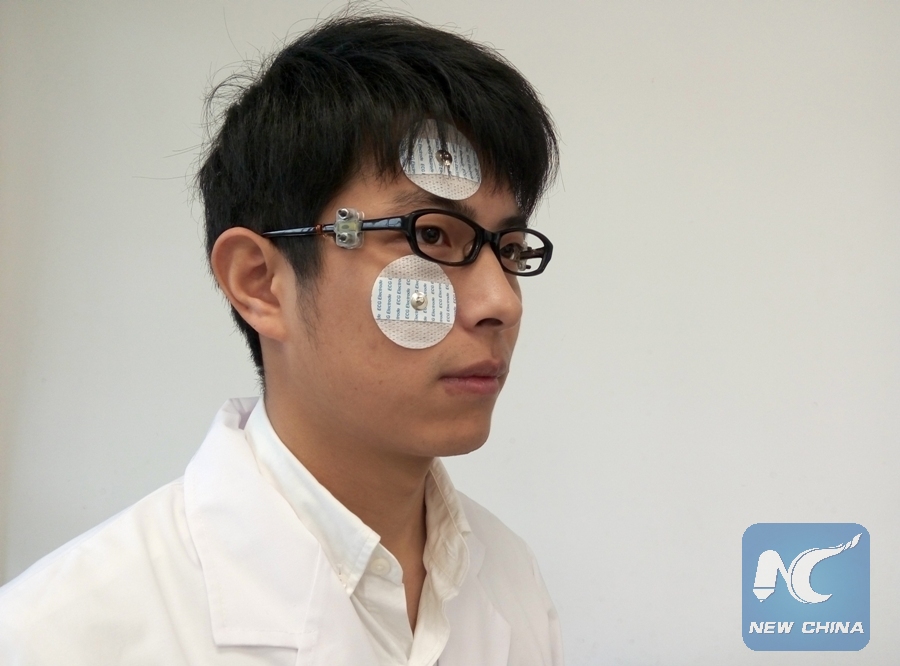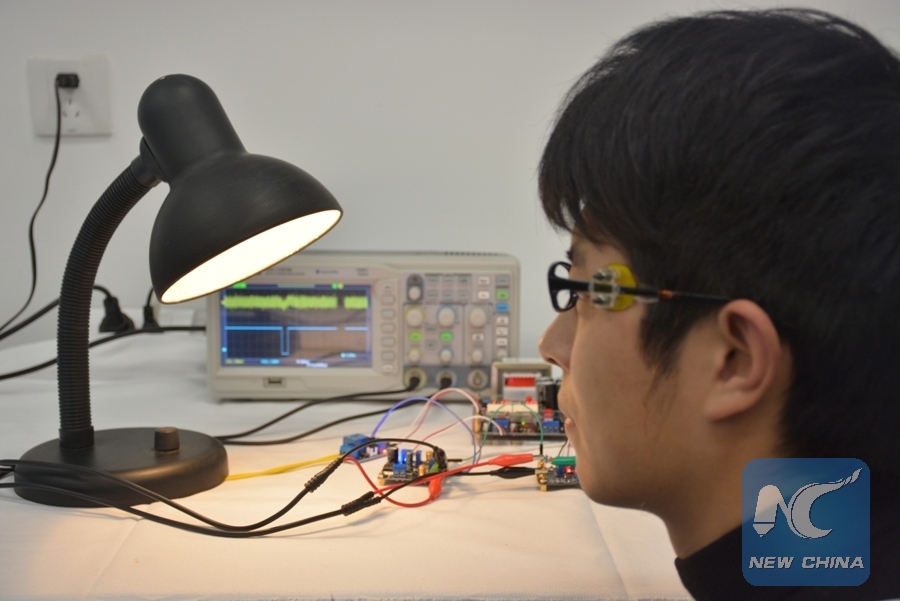

The TENG sensor-equipped glasses compared to previously developed electrooculagraphy (EOG) sensors. (Xinhua/Xianjie Pu, Hengyu Guo, Chenguo Hu of Chongqing University; Zhong Lin Wang of Chinese Academy of Sciences)
Just imagine blinking your eyes to get all things done.
Chinese researchers have designed a new sensor that, when attached to a pair of glasses, can detect the motion of an intentionally closing eye, enabling a range of hands-free tasks, including typing or turning a light on and off.
"The technique can be considered as having 'a third hand'," Professor Chenguo Hu of Chongqing University, one of the study authors, told Xinhua.
Hu said the newly designed sensor may one day help people with locked-in syndrome, amyotrophic lateral sclerosis, also known as ALS or Lou Gehrig's disease, and other disabilities, to communicate and perform everyday tasks.
Past approaches to detect eye movement have largely relied on body surface bioelectrical signals, which are very weak and unreliable, she said.

Turning on a light with the sensor-equipped glasses.(Xinhua/Xianjie Pu, Hengyu Guo, Chenguo Hu of Chongqing University; Zhong Lin Wang of Chinese Academy of Sciences)
In the new study, Hu and colleagues designed a sensor based on the so-called triboelectric nanogenerator, or TENG, to detect the motion of the skin around the corners of eyes, which she said "has never been considered as a good trigger signal source."
"When the TENG sensor is attached to the inside of an eyeglasses frame, the miniscule muscle movement of a closing eye momentarily pushes the sensor's layers together, generating an electrical signal that can be reliably measured," according to the study published this week by the U.S. journal Science Advances.
"Compared to past approaches, the new sensors achieve impressive sensitivity in low-cost, highly adaptive devices that can be fabricated in a variety of forms," the study said.
Importantly, the sensor can distinguish between unintentional blinks and deliberate ones, it said.
When the glasses are connected to a computer screen, the wearer can blink as a cursor passes over different keys, typing out a message like "Hello TENG."
"Excellent performance of this system could be proof for the msTENG (sensor) as a supersensitive sensor to be applied in computer control," Hu's paper wrote.
"We believe that on the basis of the msTENG, many kinds of mechnosensational computer games will spring out to make life more fascinating."
The researchers also designed their sensor-equipped glasses to initiate other daily tasks, such as turning a light on and off and switching on a fan.
"Our work makes it possible to get a novel design concept of controlling electronic devices via eye blinks out of the lab to become part of our daily lives," Hu added. (Xinhua)

86-10-68597521 (day)
86-10-68597289 (night)

86-10-68511095 (day)
86-10-68512458 (night)

cas_en@cas.cn

52 Sanlihe Rd., Xicheng District,
Beijing, China (100864)

